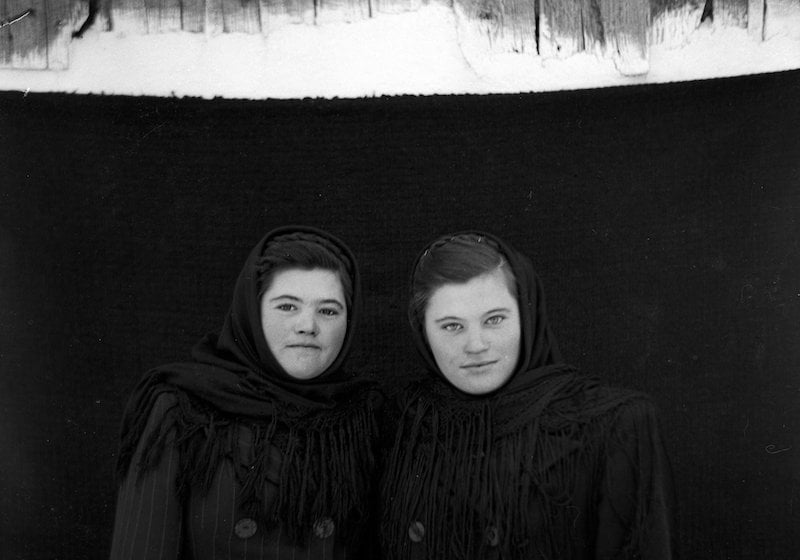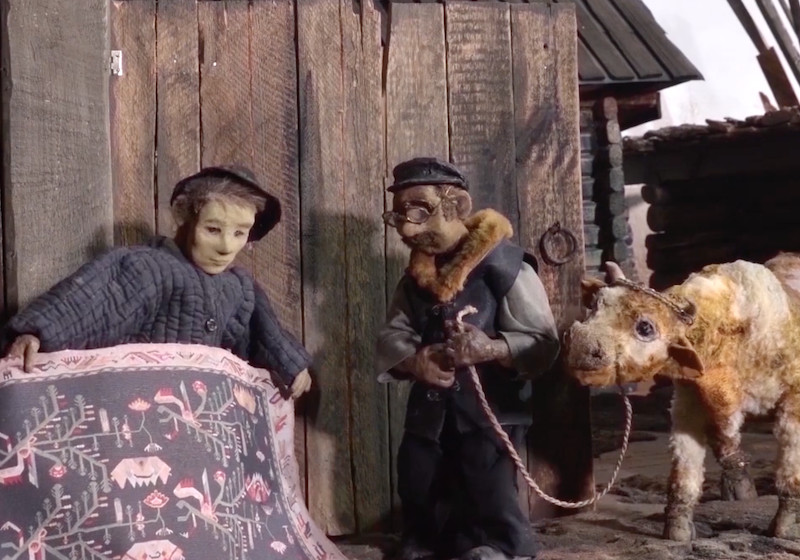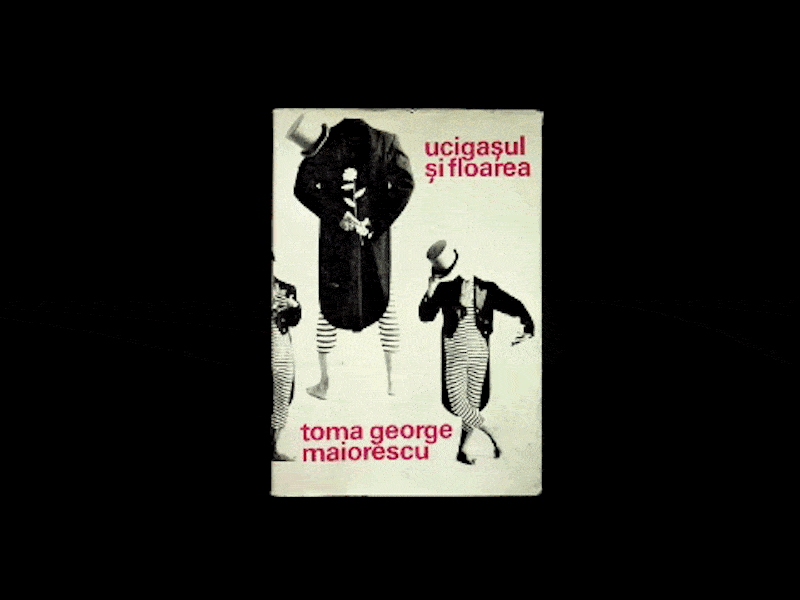A bookshop in every village: how the late Soviets animated Moldovan rural life with books
Between 1970 and 1990, 1,500 bookshops opened in Moldovan villages. Now they are almost all abandoned, turned into grocery shops, storage spaces, or sheep barns.
Whenever I visit my grandfather’s home in rural Moldova, a 40-minute drive away from the capital city of Chișinău, my father and I stop by a dilapidated building. When my father was growing up here in the 70s and 80s, it was a bookshop, painted in white and baby blue with a sign which read “Luminița” or “Little Light” in English. Now it’s a sheep barn, with broken windows replaced by door parts and plastic covers, and logs piled for firewood to the right of the old front door.
In 1970, 600 of these bookshops opened in Soviet Moldovan villages, all under the same name. By 1990, the number had reached about 1,500, with a bookshop in almost every village. You can still see them today, as you drive through towns and hamlets in the Moldovan countryside, with the same colour scheme and large windows. Most are now abandoned, although some have been converted into shops and bars. Sometimes, you can still glimpse a uniform blue logo above the entrance, or an occasional mosaic. Other times, the rectangular architecture and window frames are the only recognisable features.
The generations who grew up alongside these bookshops remember them nostalgically. They recall their daily excitement to see if new novels had arrived, the characteristic smell of new books that permeated the shop, their favourite titles and illustrations. They also remember the quirky specifics such as the Luminița lottery, where winners could get their hands on anything they wanted from the shop — including high-demand translations of world literature.
The old Luminița bookshop in the village of Cigârleni is now a sheep barn.
“I used to note down the different books I bought and their place on my shelf in a notebook,” remembers Victoria Șestovschi. Now working as a dentist, Șestovschi used to enjoy visiting the bookshops. “I was so happy when my collection reached 200 books. I was reading at night, and at school, hiding the fiction book behind textbook covers.”
Part of the explanation behind the bookshops’ popularity lay in the fact that not much other “organised” entertainment, beyond spontaneous children’s games, was available on a weekday. Television was on for only a few hours per day, interrupted by power cuts; school pupils were only allowed to the village cinemas on Wednesday afternoons, and there was no internet.
But state support for the arts and local cultural life meant that in addition to having its own book shop, every village also had its own popular orchestra, dance ensemble, sports clubs, and cinema — all hosted in the multipurpose “Culture Houses” or in schools.
Instead of 1,500 book shops, Moldova now has 70
Like any initiative in the authoritarian Soviet Union, the Luminița enterprise came from the top: the Secretary General of the Communist Party of the Soviet Socialist Republic of Moldova, Ivan Bodiul. Officially, the bookshops were part of a plan to promote reading and literacy. But not all was as it appeared. Moldovan writer Vladimir Beșleagă describes the Luminița project as “a farce like many others of the time” — a cynical political attempt to win Moldova’s writers over to the side of the state, and destroy dissent. Indeed, the decision to build the Luminița bookshops followed the third Congress of the Writers’ Union, which took place in October 1965. The meeting was condemned as “nationalist” and “diversionist” by the authorities due to its demands, such as a return to writing Romanian in the Latin alphabet. After annexing Moldova in June 1940, the Soviets had tried to prevent any kind of national feeling and aspirations to reunite with Romania — of which Moldova had been a part in the interwar period — by inventing a “Moldovan” language — a Russified Romanian language, written in Cyrillic. But the transition caused difficulty for older generations, and soon sparked a backlash. “It is natural for a Latin language to be written in Latin alphabet,” bestselling author, Ion Druță, said at the time. The Luminița project was an incentive for writers to drop such ideas and embrace the new Soviet Moldovan system.
This drive to establish a “Moldovan” language in the Cyrillic alphabet also manifested itself in other ways. Although the majority of the Moldovan population spoke Romanian, when the Luminița bookshops were built, it was impossible to find Romanian books — people were forced to head to Odesa or Cernăuți in Soviet Ukraine to scout them out instead. Luminița books were only available in “Moldovan” (Romanian written with the Cyrillic alphabet) or Russian. Unsurprisingly, the Russian-language books often sold badly in the Romanian-speaking villages, former bookseller Nina Marian told The Calvert Journal. Marian worked at the Luminița in the central Moldovan village of Boldurești, Nisporeni, for six years, between 1986 and 1992, when the bookshop was privatised, closed, and made into a grocery shop. Marian says that she would sometimes have to travel to the capital to move her Russian-language stock, usually selling the books to museums or state companies, which would all have their own libraries available for workers.
As well as the stringent and imperialist linguistic requirements, books were also selected based on political criteria. Most were translations, or novels from more or less politically convenient Moldovan writers. Most Romanian novels in any language were considered unsuitably bourgeois. Only a handful of Romanian books were approved for sale; usually they were by authors who’d been born in Eastern Romania (a region also named Moldova).
The state censors ensured that only Party-friendly literature would be published, and critical passages would be removed. Authors who rejected Socialist realism, or those who criticised the regime, such as Druță, found it more difficult to get their work published. (Somewhat ironically, Druță had to leave Moldova for the more cosmopolitan and freer Moscow in 1969, in order to be able to continue his career.)
Aside from the pre-selection that happened before the books reached the shops themselves, the question of which novels were taken from the shelves once they arrived wasn’t always clear cut. My parents, and other people of their generation, tell me that occasionally, if certain copies weren’t selling well, then booksellers would bully them into buying books they didn’t really want.
Just like other Soviet workers, booksellers also had certain sales plans and quotas they had to fulfil each month. Each village would need to sell between 600 to 800 roubles worth of books per month, which translated into between 300 to 500 books — a children’s book cost 15 kopeks, while a fiction or non-fiction book was between 1.30 and 3.60 roubles. “We always managed to fill our quota,” says former bookseller Marian.
Lidia Isac also worked as a bookseller in the southern Moldovan village of Antonești, Cantemir, for seven years, until 1992. She says that, like most booksellers, in order to make her sales plan she would make trips to schools or collective farms to sell more stock, sometimes even going as far as Ukraine. In 1992, during privatisation, Isac wanted to buy the bookshop, but lacked the necessary funds. The family struggled to cover the costs of raising their two children, even with wages from Isac and her husband. Isac ultimately went abroad to work as a carer in Italy for 16 years, with other stints working in Israel and the United States. The bookshop building is now abandoned.
Yet despite the political cynicism that might have been behind the initiative, the Luminița bookshops did succeed in promoting reading. Tens of thousands of people subscribed to the fiction collections sold in the bookshops. My mother remembers how, as a teen, every single pupil in her class — even those who didn’t enjoy studying — voraciously read the books that appeared in Luminița’s sci-fi, adventure, and romance series during breaks or after school. Foreign titles included the likes of Jules Verne, Mark Twain, and Alexander Dumas. Russian detective novels too were popular, especially among the adults. Indeed, Soviet people used to take pride in the claim that they were among the most voracious readers in the world.
However, the system did not last. When communism fell in 1991, the bookshops were privatised. Print runs for the most popular poetry books fell from 15,000 to 1,000. As a result, prices rose. Against the socio-economic and political instability of the 90s, the old cultural life of villages was slowly replaced by the resurgent churches, television, and more recently, especially for the younger generations, the internet.
Instead of 1,500 book shops, Moldova now has 70. Some of them are online, although most digital orders are placed by mobile young people in towns and cities, rather than those living in more remote areas. One of the few Luminița bookshops that still sells books today is in Leova, in southern Moldova. Renamed Micul Prinț (or The Little Prince), the shop would not be able to survive by selling books alone: on its shelves, textbooks, souvenirs, games, toys, and stationary sit next to hygiene and cleaning products.
Moldovans have gained freedom and easier forms of entertainment. People have a far greater offer of how they can spend their spare time, and far more book titles, authors, literary styles, and political ideas to choose from. But access to fresh books in remote areas is now harder. “Kids now only stare at their computers and phones,” Marian complains. When she was in charge of the bookshop, her village had around 4,500 inhabitants. The Luminița was a social hotspot in the village, which, like the village cinema, orchestra, dance club, and so on, helped build and keep the community alive. Now the population has halved: only the very old and the very young have stayed in the village. The adults are working abroad, often in Western Europe, Israel, or Russia. Marian herself worked at the food shop until 2009, when she moved to Portugal to join her family. She worked alongside her son and husband in property restoration for five years, before coming back home to retire.
Indeed, the story of Luminița’s rise and fall is not just about the flourishing and decline of a cultural project. It’s also a story of Moldova’s complicated past, and the more recent shrinking and slow disappearance of the Moldovan village. It will take visionary socio-economic projects, and big investments, to revive rural Moldovan life. An integral part of that revival will have to be cultural. Until then, Luminița will remain a memory of what we’ve lost, and gained, with late Soviet reforms, and the wild ‘90s that followed them.


